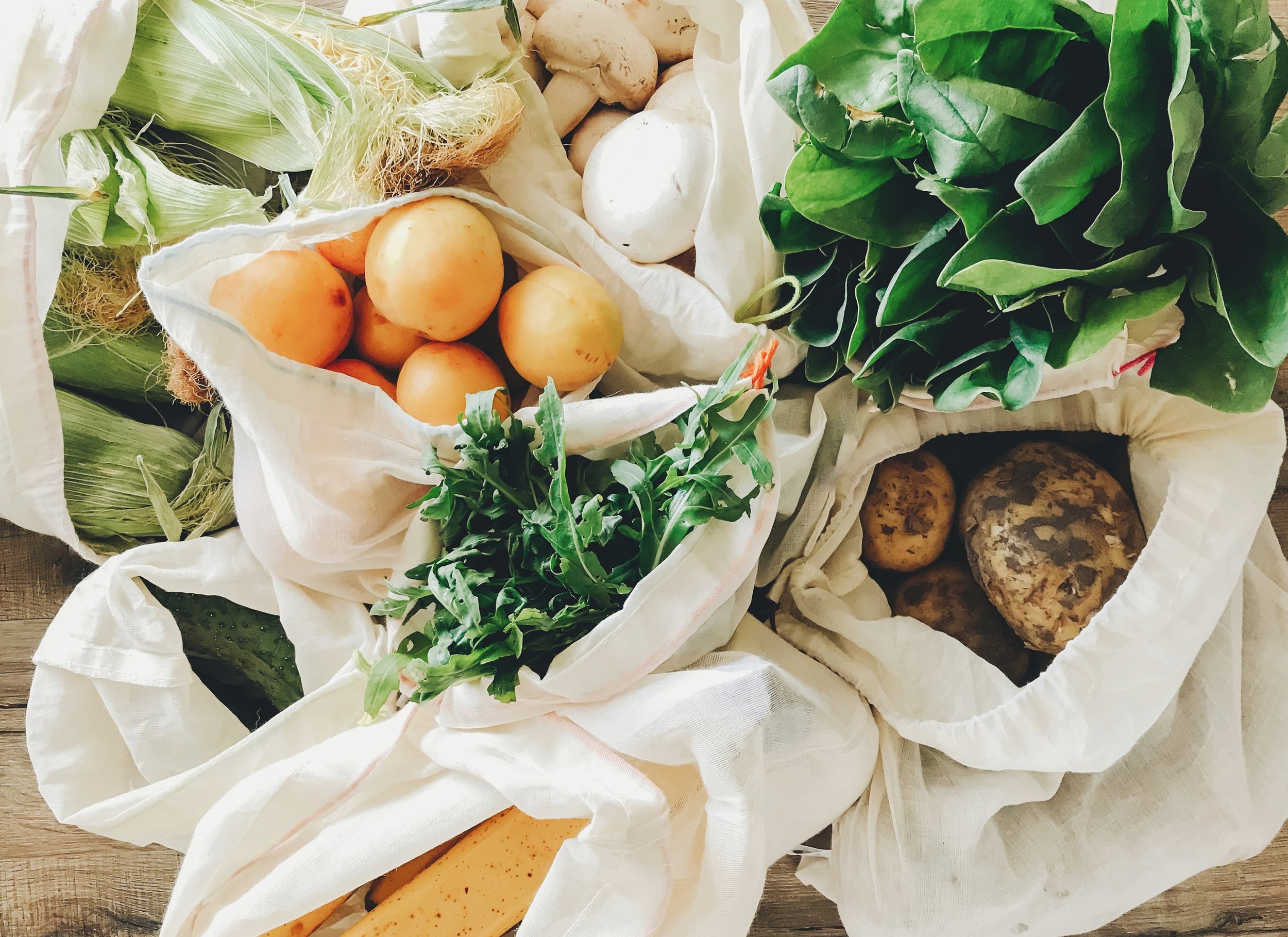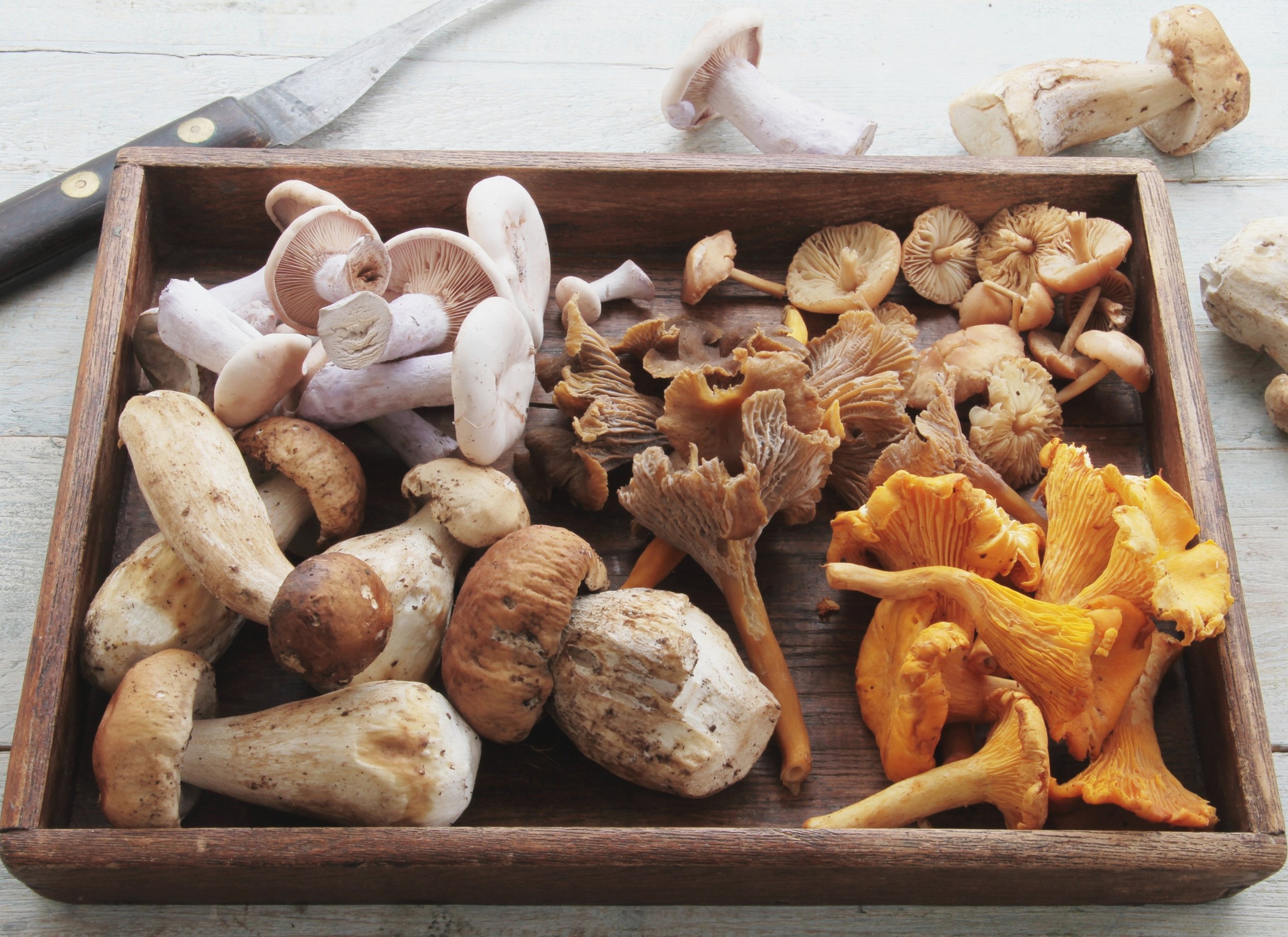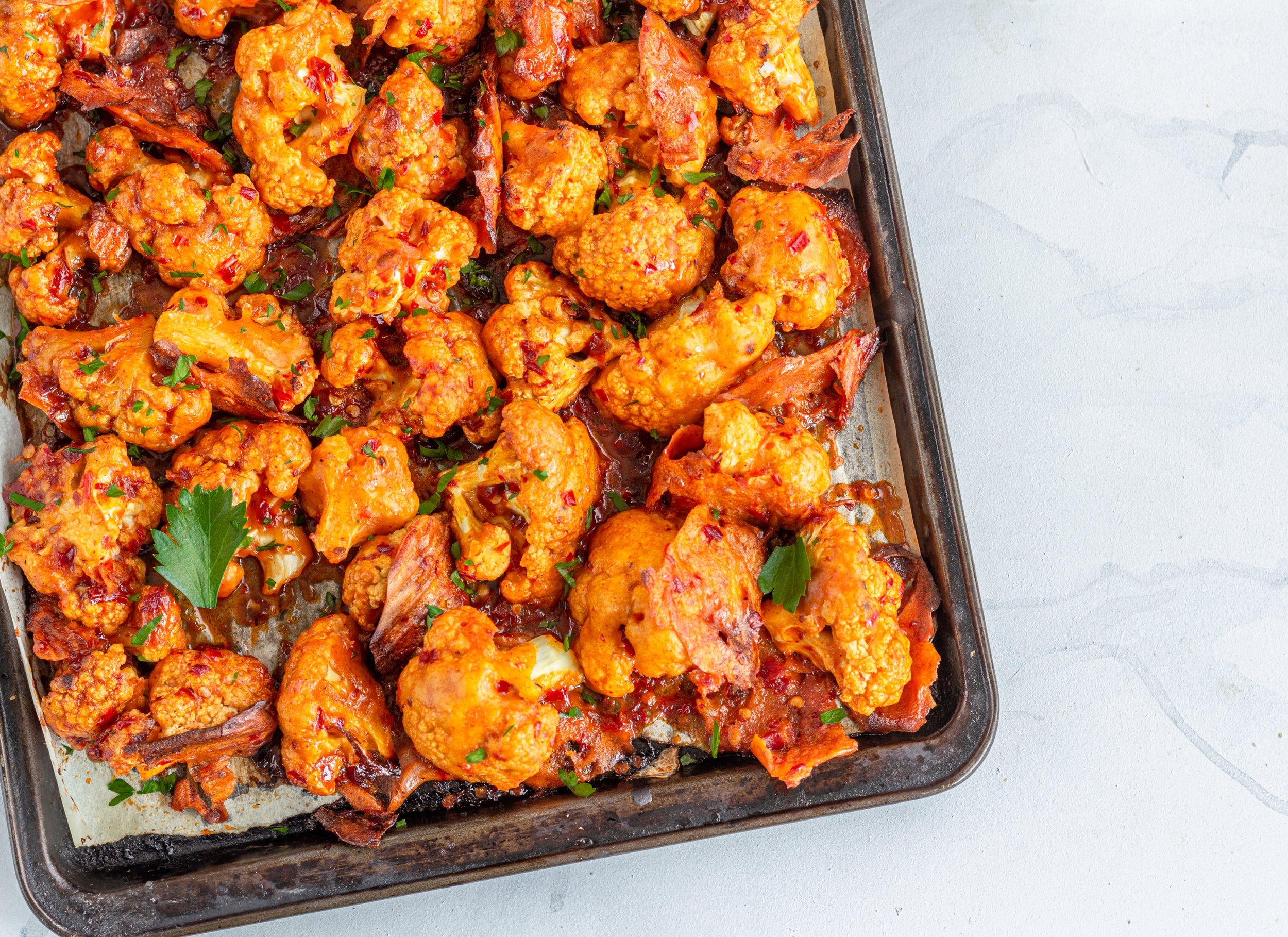10 SUSTAINABLE FOODS TO ADD TO YOUR GROCERY LIST
Did you know that a single pound of beef can take up to 1,800 gallons of water to produce? That's enough to fill 27 bathtubs! As concerns over water scarcity and climate change continue to grow, many people are turning to sustainable foods as a way to reduce their environmental impact while still enjoying delicious and nutritious meals.
Sustainable food is produced, processed and distributed in a way that minimizes harm to the environment and supports local communities. By making conscious decisions about what you eat, you can contribute to a more eco-friendly food production system and help to protect our planet for future generations.
What Makes Food Sustainable?
But what exactly contributes to food sustainability? It's not just about organic or non-GMO labels. It's about looking at the bigger picture and considering factors like the environmental impact of production, the use of natural resources, the treatment of animals and the social and economic effects on the communities involved. By making informed choices, you can enjoy delicious and nutritionally dense food while also making a positive impact on the planet.
Now that we've got you hooked on the idea of eco-friendly and nourishing foods, let's dive into ten delicious and eco-friendly foods that you can add to your grocery list. These foods are packed with nutrients and are easy on the environment. They're versatile and can be used in a wide variety of dishes, so you'll never get bored. Whether you're a seasoned environmentalist or simply looking to make a positive change in your life, you'll want to keep this sustainable foods list handy.
Sustainable Foods to Add to Your Grocery List
Quinoa
When it comes to sustainable foods, quinoa is pretty much the star of the show.
Quinoa is a protein-packed grain that has become increasingly popular in recent years. This ancient grain is not only gluten-free, but it also requires less water and fertilizer to grow compared to other grains. Quinoa is an awesome source of fiber, vitamins and minerals and it’s also a complete protein, which means it contains all nine essential amino acids that your body needs to function correctly. No wonder they call it a superfood!
Quinoa can be used in a wide variety of dishes, from salads and soups to pilafs and casseroles. It's a great alternative to rice or pasta, just make sure to season it generously with various herbs and spices for added flavor.
Lentils
Lentils are an easy-to-cook and versatile protein source that have definitely earned their place on the list of sustainable foods. They're an excellent protein alternative to meat, and they come in various colors – including green, brown and red. Lentils are great for your health, since they provide plenty of fiber and iron.
Lentils can be added to soups, stews, salads and more. We suggest using them to make vegetarian burger patties!
Tofu
Tofu is a vegetarian protein source made from soybeans that requires less land and water to produce than animal-based proteins*. It can be used in a wide variety of dishes like stir-fries, curries, fried rice and salads. Tofu also contains calcium, iron and many other essential vitamins and minerals.
This delicious block of soy is a blank canvas – a vessel for flavor! Season it with fresh herbs and spices, or even try a marinade for maximum flavor.
Pro Tip: The main complaint surrounding tofu is its soft and squishy texture. Some people just can't move past it. To fix this, you'll want to "press" your tofu before preparing it. “Pressing” tofu meaning applying pressure for enough time to release the majority of the liquid.
After pressing, cut the tofu into cubes, toss in cornstarch (this is the key), then simply pan fry it until crispy. Feel free to marinate in soy sauce (or something similar) after cubing and/or add some dry seasonings into the cornstarch, like garlic powder and pepper. An airfryer works wonderfully as a substitute to pan frying if you're looking to reduce oil.
*Keep in mind that, although tofu is much more sustainable than meat, it’s not as eco-friendly as other options on this list. 8 Billion Trees estimates that 100g of tofu is equal to 0.08kg of carbon emissions.
Sweet Potatoes
Not only are they delicious, but sweet potatoes are rich in fiber, vitamins and minerals! They're also easy to grow, since they require less fertilizer than other crops. They come in different colors – including orange, purple, and white – and can be roasted, baked or mashed to create a variety of scrumptious dishes!
Plenty of foods you know and love can be made from sweet potatoes. Some common examples are gnocchi, french fries, potato salad, pancakes, soup, mashed potatoes and even pizza crust! Many people actually end up preferring the sweet potato version of these foods to the original.
Bonus Recipe: One of the most delicious sweet potato recipes we've come across is a simple one pan bake! Toss cubed sweet potato, red onion, gnocchi, fresh garlic and shallots in balsamic vinaigrette, olive oil and honey or maple syrup. Season with salt, pepper and red pepper flakes, then lay out on a sheet pan and bake at 450 until crispy. Hot out of the oven, toss this over baby spinach to wilt and sprinkle with parmesan.
Mushrooms
Mushrooms are a low-impact food that requires very little land, water or fertilizer to grow. They come in many varieties such as shiitake, portobello and oyster, and can be used in a ton of dishes, including stir-fries, salads and pastas. The mushrooms' rich, umami flavor makes them a great meat substitute in many dishes.
Mushrooms do some amazing things! They can even decrease the risk of cancer, lower sodium intake, promote lower cholesterol, protect brain health and more. Blend them into pasta sauce as an easy way to bulk it up, drink in tea or coffee or even try capsules of mushroom extract if you don't like the taste.
Spinach
When it comes to sustainable foods, it doesn’t get much healthier than spinach.
Spinach is a nutrient-dense green that's easy to grow and requires fewer pesticides than other crops. Full of iron, calcium and vitamin A, spinach can be eaten both raw and cooked and can be used in a variety of recipes, including salads, smoothies and pasta dishes.
Try sautéing this sustainable food with garlic for a quick and easy side dish!
Cauliflower
Cauliflower is a sustainable food with a low carbon footprint. It’s easy to grow and requires fewer pesticides than other vegetables. Like sweet potatoes, cauliflower can be roasted, grilled or mashed, and it can be used as a substitute in a wide variety of dishes. You’ve probably seen the “cauliflower-craze” sweeping the low-carb nation! Browsing through your local supermarket, you’ll find Cauliflower made into pizza crusts, rice, pasta, mashed “potatoes” and more.
Bonus Recipe: Ditch the chicken and try making cauliflower hot wings. Just pick your favorite wing sauce, whip up some batter, roll in Panko and bake in the oven or air fryer. It’s vegetarian and maybe even better tasting than your average chicken wing!
Apples
Apples are a seasonal fruit that's easy to find and easy to grow. A powerful antioxidant, apples can be eaten raw or cooked and are used in a variety of dishes all over the world – even if they’re mostly desserts.
If you've got some extra apples lying around, consider using them to make homemade applesauce or sweet apple butter!
Mussels
When analyzing sustainable foods, you’ll notice that not many seafood items have made the list. A study by The United Nations Food and Agricultural Organization estimates that 85% of fish stocks are overfished. Mussels, however, are the exception to the “bad seafood” rule.
Mussels are easily caught using long lines stretched out into the ocean. This practice uses no land, requires no feed and harvesting the mussels doesn’t result in damage to the marine ecosystem. Long story short – next time you’re dining at a seafood restaurant, skip the shrimp and go for the mussels instead.
Eggs
Eggs are a widely available versatile protein source (even if the prices may have spiked in recent months). They're an excellent source of protein, vitamins and minerals and there’s no shortage of easy and delicious ways to cook this sustainable food.
Scramble up or fry some eggs for an easy breakfast before work. Poach them to perfection on top of avocado toast or get fancy in the kitchen with some eggs benedict or a nice frittata.
Eggs are also a perfect addition to salads and can be used to make homemade mayo or aioli. If that's not convincing enough, they're also a perfect on-the-go snack that’s easy to pack and enjoy later.
As the negative impacts of industrial agriculture become more apparent, it is clear that eating sustainably is more important than ever. By making conscious choices about what we eat and where it comes from, we can not only reduce our carbon footprint, but also support local communities and promote healthier ecosystems.
What Can We Do to Eat More Sustainably?
So what can we do to increase our food sustainability? In addition to incorporating these ten sustainable foods into your diet, there are also simple changes you can make when grocery shopping to further reduce your environmental impact. One easy way is to purchase foods that are in season. This not only ensures that the food is at its freshest and most flavorful, but also reduces the energy needed to transport and store it. Local farmers markets and community-supported agriculture (CSA) programs are great resources for finding seasonal produce.
Another way to eat sustainably is to incorporate more plant-based meals into our diets. Animal agriculture is a major contributor to greenhouse gas emissions and deforestation, so reducing our red meat and dairy consumption can have a significant impact. This doesn't necessarily mean going completely vegan or vegetarian - even just having one meatless meal per week can make a difference.
Tips for Sustainable Grocery Shopping
When it comes to grocery shopping, it can be overwhelming to navigate the various eco-labels and fair trade certifications. One approach is to prioritize locally sourced and organic foods, as these tend to have a low environmental impact. Another strategy is to reduce packaging waste by buying in bulk and bringing reusable bags and containers to the store. Just make sure to have a plan before you shop to try and use up foods before they expire. Reducing food waste is an extremely important component in environmentally-friendly eating.
Overall, green eating is about making mindful decisions and considering the broader impact of our food choices. By supporting sustainable farming and reducing our reliance on industrial agriculture, we can create a more resilient and healthy food system for generations to come.
What are you waiting for? Add these foods to your grocery list today and start your journey towards eco-friendly eats! (If we missed any of your favorites, drop them in the comments below).














